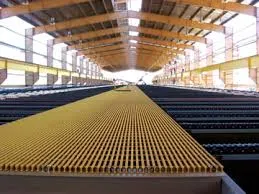
-
 Afrikaans
Afrikaans -
 Albanian
Albanian -
 Amharic
Amharic -
 Arabic
Arabic -
 Armenian
Armenian -
 Azerbaijani
Azerbaijani -
 Basque
Basque -
 Belarusian
Belarusian -
 Bengali
Bengali -
 Bosnian
Bosnian -
 Bulgarian
Bulgarian -
 Catalan
Catalan -
 Cebuano
Cebuano -
 China
China -
 China (Taiwan)
China (Taiwan) -
 Corsican
Corsican -
 Croatian
Croatian -
 Czech
Czech -
 Danish
Danish -
 Dutch
Dutch -
 English
English -
 Esperanto
Esperanto -
 Estonian
Estonian -
 Finnish
Finnish -
 French
French -
 Frisian
Frisian -
 Galician
Galician -
 Georgian
Georgian -
 German
German -
 Greek
Greek -
 Gujarati
Gujarati -
 Haitian Creole
Haitian Creole -
 hausa
hausa -
 hawaiian
hawaiian -
 Hebrew
Hebrew -
 Hindi
Hindi -
 Miao
Miao -
 Hungarian
Hungarian -
 Icelandic
Icelandic -
 igbo
igbo -
 Indonesian
Indonesian -
 irish
irish -
 Italian
Italian -
 Japanese
Japanese -
 Javanese
Javanese -
 Kannada
Kannada -
 kazakh
kazakh -
 Khmer
Khmer -
 Rwandese
Rwandese -
 Korean
Korean -
 Kurdish
Kurdish -
 Kyrgyz
Kyrgyz -
 Lao
Lao -
 Latin
Latin -
 Latvian
Latvian -
 Lithuanian
Lithuanian -
 Luxembourgish
Luxembourgish -
 Macedonian
Macedonian -
 Malgashi
Malgashi -
 Malay
Malay -
 Malayalam
Malayalam -
 Maltese
Maltese -
 Maori
Maori -
 Marathi
Marathi -
 Mongolian
Mongolian -
 Myanmar
Myanmar -
 Nepali
Nepali -
 Norwegian
Norwegian -
 Norwegian
Norwegian -
 Occitan
Occitan -
 Pashto
Pashto -
 Persian
Persian -
 Polish
Polish -
 Portuguese
Portuguese -
 Punjabi
Punjabi -
 Romanian
Romanian -
 Russian
Russian -
 Samoan
Samoan -
 Scottish Gaelic
Scottish Gaelic -
 Serbian
Serbian -
 Sesotho
Sesotho -
 Shona
Shona -
 Sindhi
Sindhi -
 Sinhala
Sinhala -
 Slovak
Slovak -
 Slovenian
Slovenian -
 Somali
Somali -
 Spanish
Spanish -
 Sundanese
Sundanese -
 Swahili
Swahili -
 Swedish
Swedish -
 Tagalog
Tagalog -
 Tajik
Tajik -
 Tamil
Tamil -
 Tatar
Tatar -
 Telugu
Telugu -
 Thai
Thai -
 Turkish
Turkish -
 Turkmen
Turkmen -
 Ukrainian
Ukrainian -
 Urdu
Urdu -
 Uighur
Uighur -
 Uzbek
Uzbek -
 Vietnamese
Vietnamese -
 Welsh
Welsh -
 Bantu
Bantu -
 Yiddish
Yiddish -
 Yoruba
Yoruba -
 Zulu
Zulu
grp flange
Understanding GRP Flanges A Comprehensive Overview
In the world of industrial applications, GRP (Glass Reinforced Plastic) flanges have emerged as a reliable and versatile solution for various piping and structural needs. Known for their lightweight properties, corrosion resistance, and durability, GRP flanges are becoming increasingly popular across multiple sectors, including water treatment, chemical processing, and construction.
What are GRP Flanges?
GRP flanges are components used to connect pipes, allowing for the easy installation and maintenance of piping systems. Made from a composite material that combines glass fibers and resin, these flanges offer significant advantages over traditional materials like metal or PVC. The glass fibers provide strength, while the resin ensures that the flanges remain lightweight and resistant to a variety of environmental conditions.
Advantages of GRP Flanges
1. Corrosion Resistance One of the standout features of GRP flanges is their exceptional resistance to corrosion. Unlike steel or iron, which can rust over time, GRP flanges are impervious to many chemical agents and environmental factors. This makes them ideal for use in corrosive environments, such as chemical plants or wastewater treatment facilities.
2. Lightweight GRP flanges are significantly lighter than their metal counterparts. This characteristic not only simplifies transportation and installation but also reduces the load on support structures and minimizes installation costs.
grp flange

3. Durability The inherent strength of glass fibers combined with the toughness of resin provides GRP flanges with impressive durability. They can withstand considerable pressure and are less likely to deform or break compared to other materials.
4. Thermal Insulation GRP flanges exhibit good thermal insulation properties, which helps in reducing heat loss in piping systems. This can be particularly beneficial in applications where temperature control is crucial.
5. Cost-Effectiveness Although the initial cost of GRP flanges may be higher than some traditional materials, their long lifespan and low maintenance requirements contribute to their overall cost-effectiveness. The reduced need for replacement Parts over time also enhances their financial appeal.
Applications of GRP Flanges
GRP flanges find applications in numerous industries. In the water treatment sector, they are used to connect pipes in systems that handle aggressive chemicals. In construction, they support structures that require strong yet lightweight materials. Additionally, they are widely employed in the oil and gas industry, where corrosion resistance and durability are paramount.
Conclusion
As industrial demands evolve, the need for innovative materials like GRP continues to grow. GRP flanges represent a significant advancement in piping technology, offering a blend of strength, lightweight design, and corrosion resistance. Their expanding use across various industries underscores their importance as a solution for modern engineering challenges. Whether for new installations or upgrades, GRP flanges are poised to play a crucial role in the future of piping systems.









